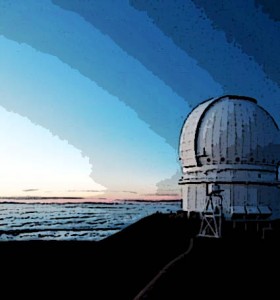As many of you noticed, the Ice Investigators project ran out of images over the weekend (WooHoo!) and it now has images again (WooHoo, again!).
When Ice Investigators was launched it contained data from Marc Buie that was taken with the Subaru telescope in Hawaii last summer. This initial set of 13,626 images was shown to users until every image had been seen by at least 15 people and at least 8 of you clicked “Done Working.” Now that the images have all been viewed, Marc and his team (which includes Dave Borncamp, who you may know from the forums) will be reviewing the objects you marked. As soon as we back info on what he’s found, we’ll let you know!
The new data looks a bit different from the old data. The 12,700 new images in the system come from JJ Kavelars. Here’s what JJ had to say about the new data:
These new images have been acquired by the Canada France Hawaii Telescope. The CFHT is a smaller telescope (3.6m diameter) then the Subaru telescope (8.2m diameter) which produced the first series of Ice Investigator images. As the CFHT is a smaller telescope we must take longer exposures to achieve sensitivity that might reveal our encounter target. Simply taking longer exposures, however, would created trailed images of the distant Kuiper belt objects. Instead, we take short exposures (about 90s each) to avoid any trailing in the individual images. This series of images are average together while making small offsets between exposures to keep the distant solar system objects stationary. This is called ‘digital tracking’. The final images reveal round detections for objects in the distant solar system and blurred images of stationary starts.
One rate is not enough. The difference in viewing perspective between objects at 40AU and those just 10% further away at 44AU would cause blurring. We will miss sources if we only track at one rate. The current suite of images being viewed by Ice Investigators have been stacked at rates consistent with objects at distance of 40, 42, 44, 46, and 48 AU. This fine grained digital rate stepping will help ensure that we detect the faintest sources possible. There are many more small objects in the Kuiper belt than large, going fainter makes us sensitive to those small sources. Digital tracking at multiple rates is critical to our chances for success.
What kind of source will we like detect? Searching a larger field is the major advantage provided by the CFHT imaging. Since CFHT’s camera covers a full square degree of sky (compared to about 1/3rd of degree using the MEGACAM on Magellan) we are able to see a larger part of the sky patch where New Horizons targets might be lurking. As the CFHT data cover a larger part of the sky these observations are sensitive to a Kuiper belt object with an more inclined orbit than our previous search. Finding an encounter target with a different orbit would further expand the science impact of the New Horizons mission. These observations probe an expanded range of possible encounter targets.
These new images offer you new chances to explore our solar system for distant ice. We hope you will help us plot a course for the New Horizons spacecraft!





 Join the Crew!
Join the Crew!
 Escape Velocity Space News
Escape Velocity Space News
In this series of pictures appear most objects of the asteroid type.
Do make the digital trackin focused on the belt of kuiper, makes variable stars look like several consecutive spots similar to asteroids?
Hi Rafael,
It’s possible that some variable stars will appear as asteroids 🙁
It is not a problem, the primary objective is to find a KBO on the route of the New Horizons, and the images are very good for that. They better filter the objects according to their distance
The telescope CFHT could not work for 2 months.
This affected the obtaining of new images to iceinvestigator?
Hi Rafael,
The much bigger issue was when the Subaru Telescope went offline. Check out http://www.universetoday.com/87245/subaru-8-meter-telescope-damaged-by-leaking-coolant/